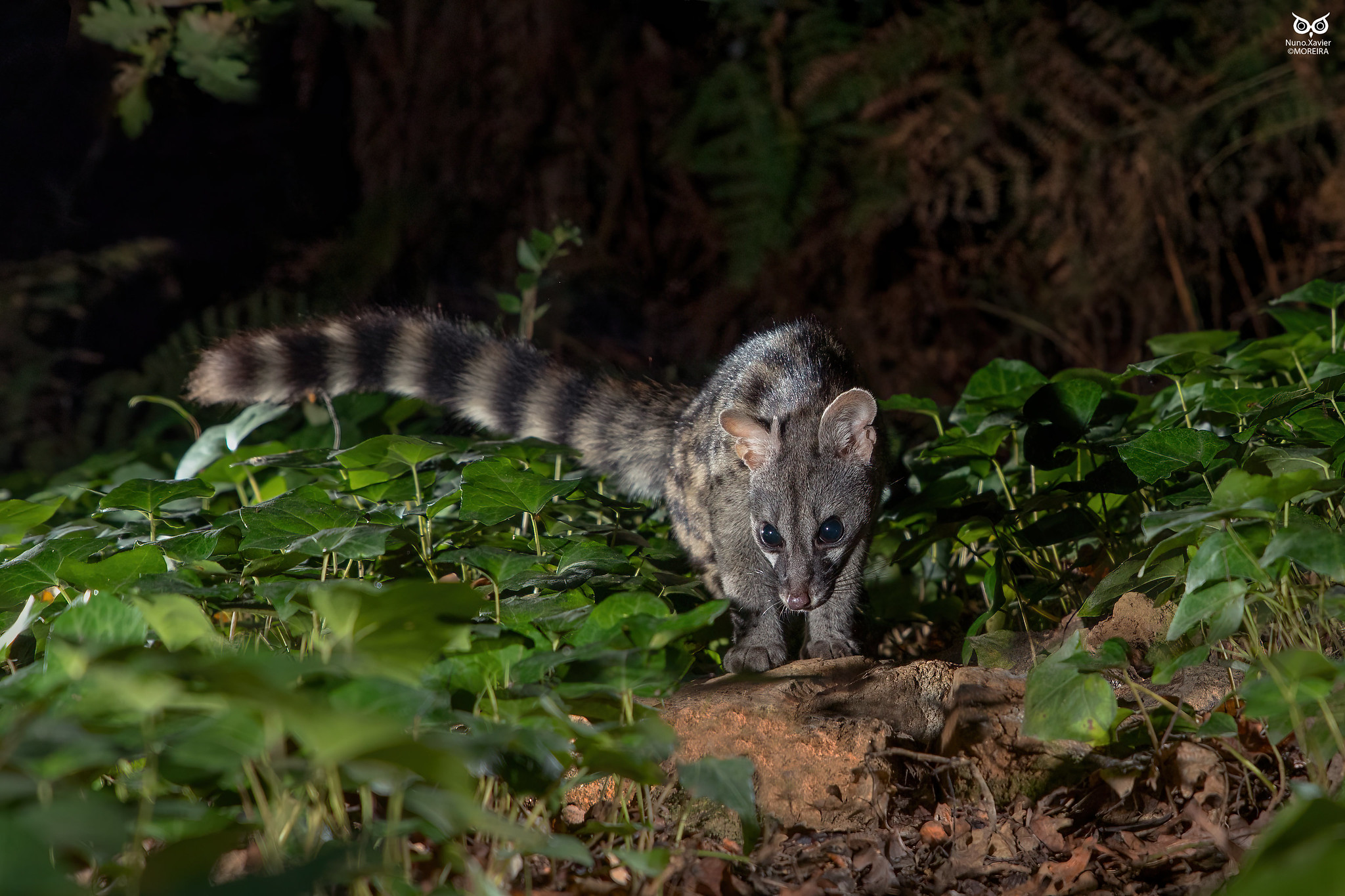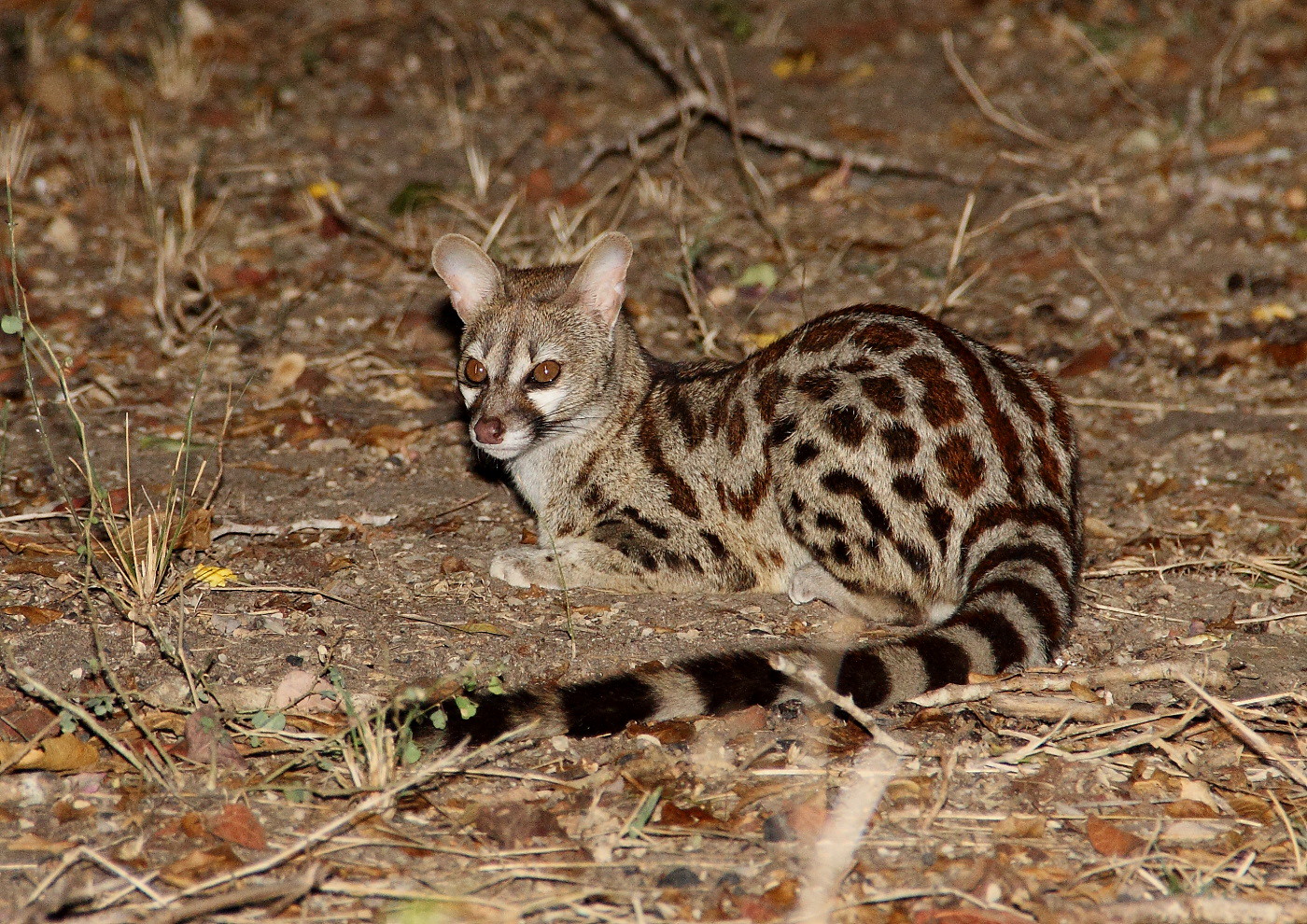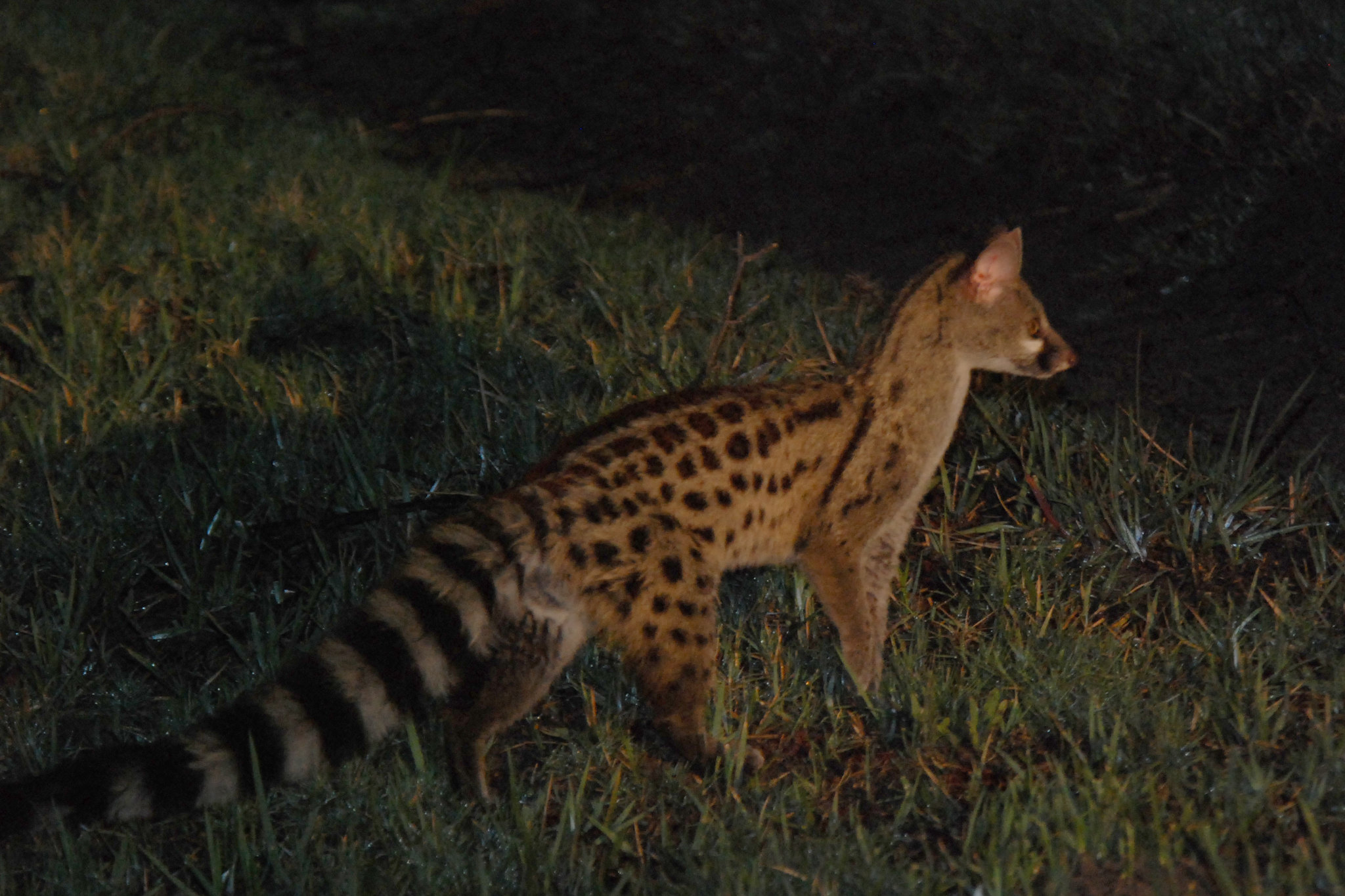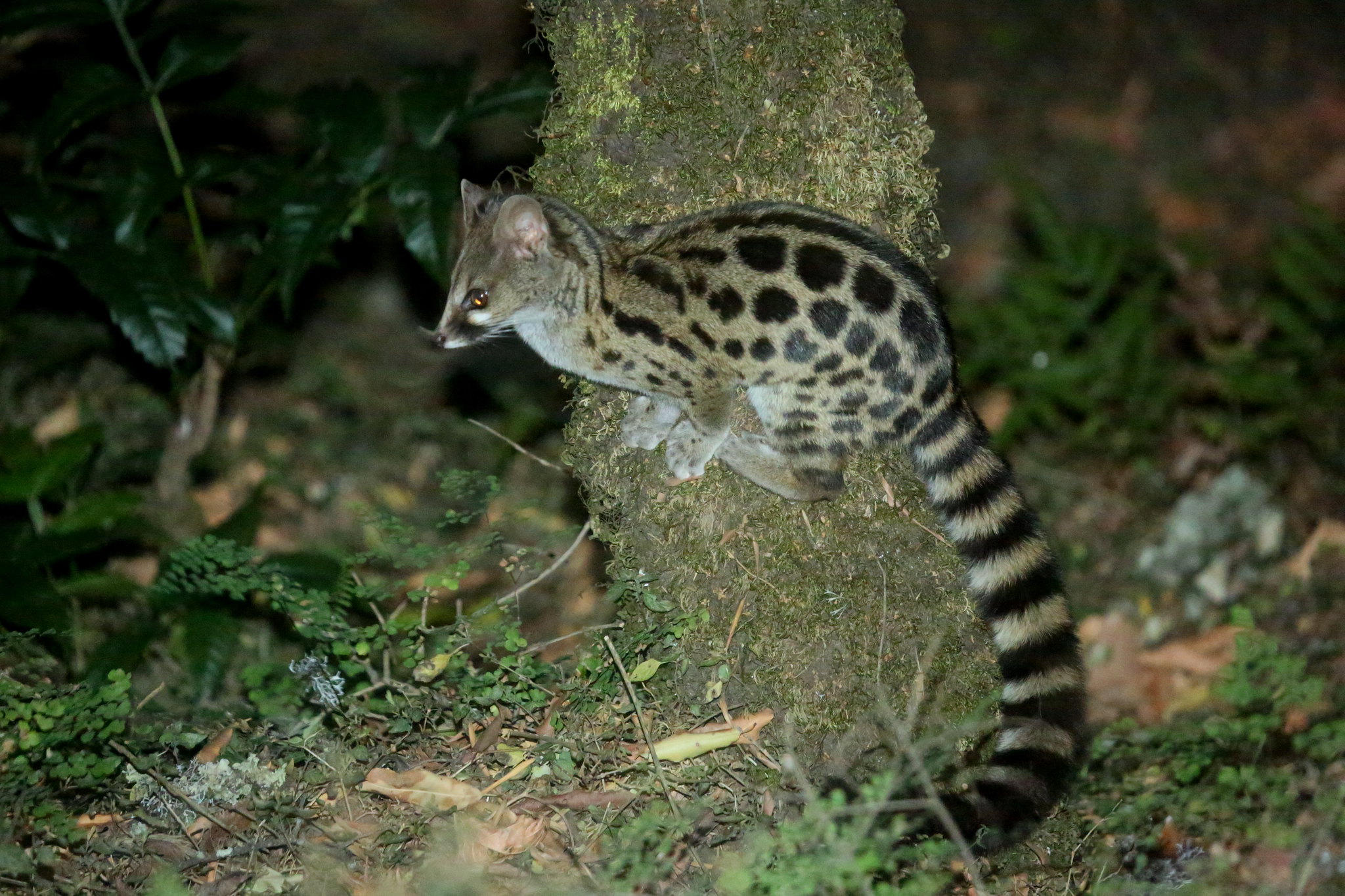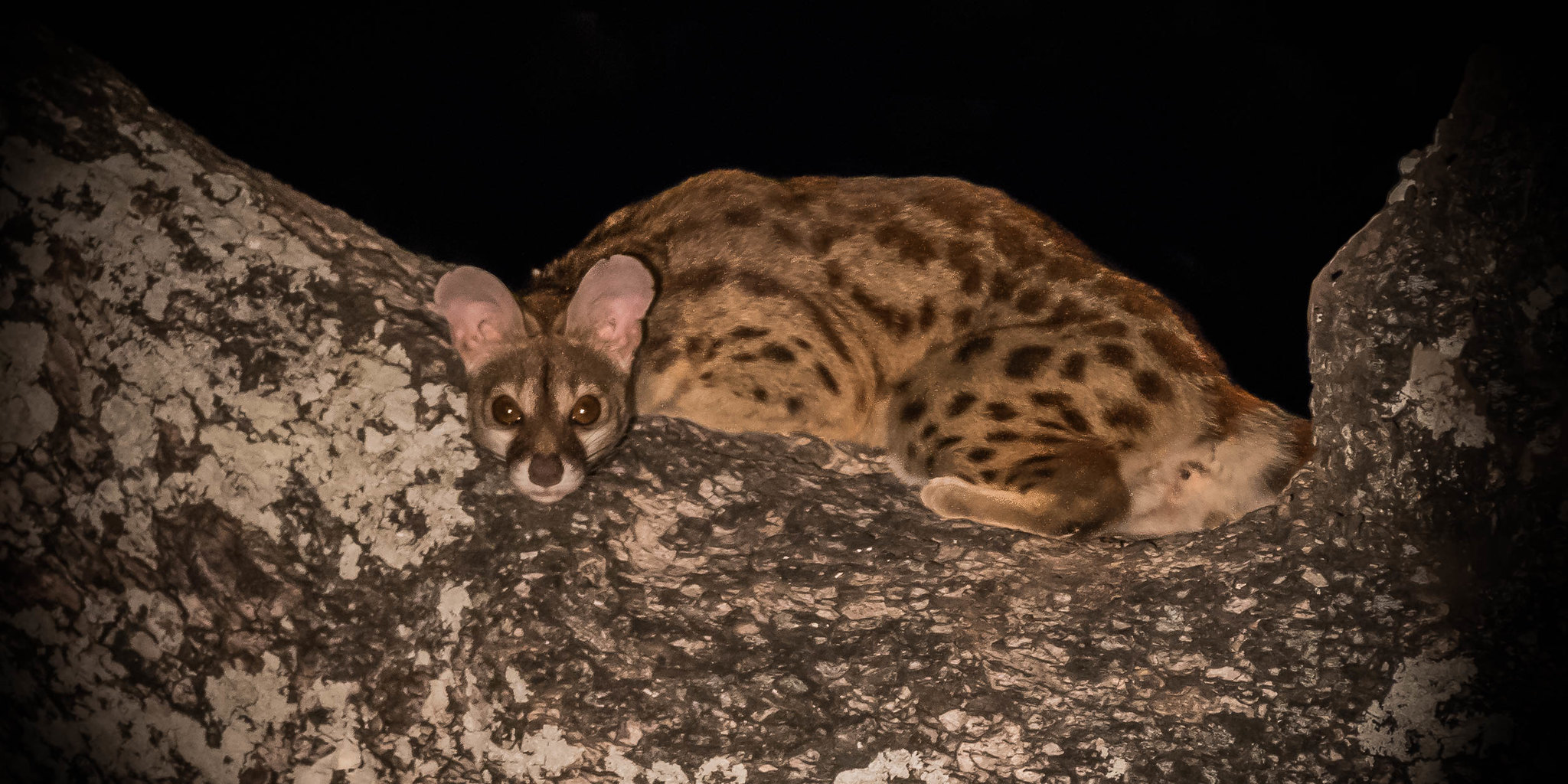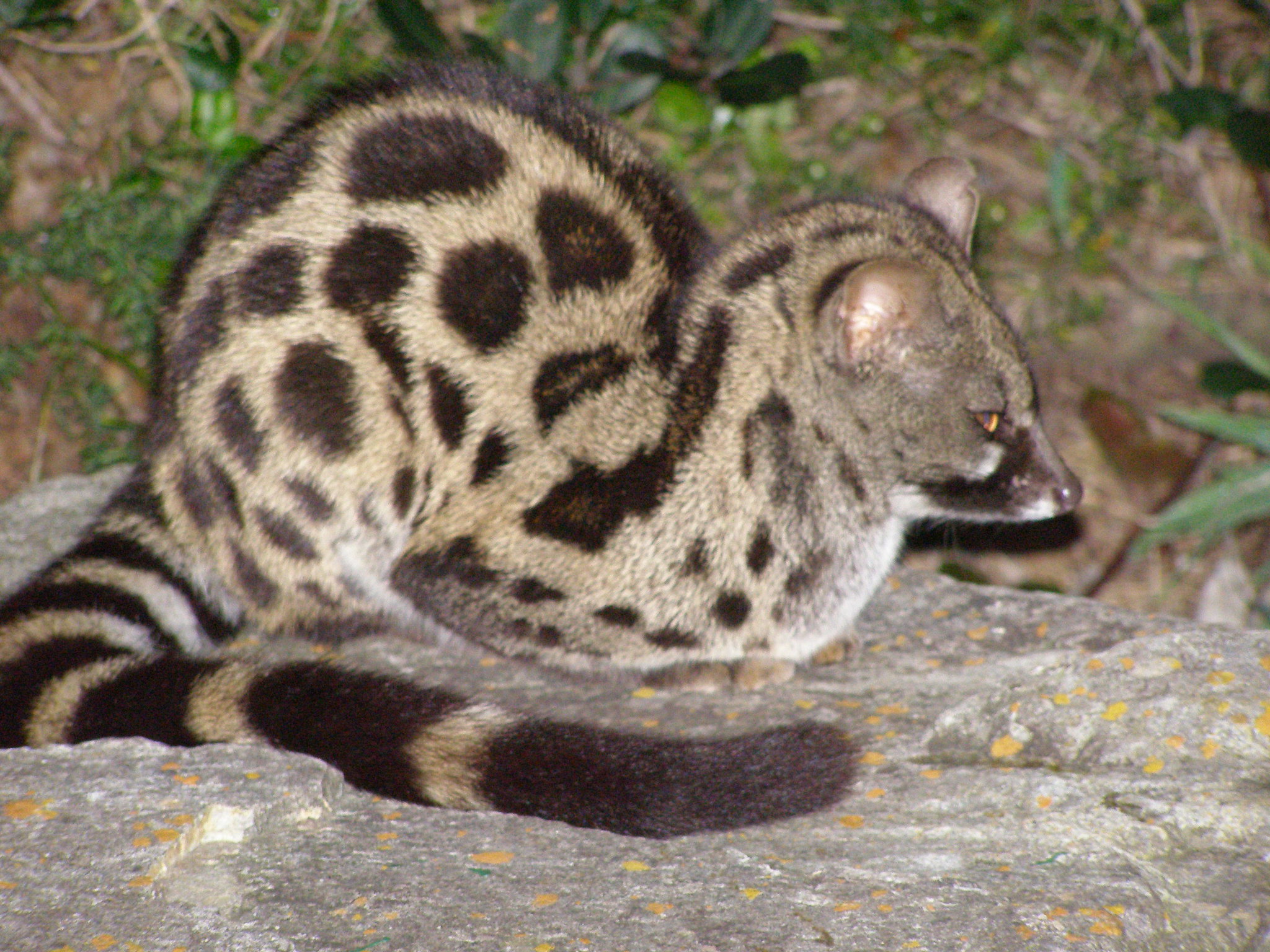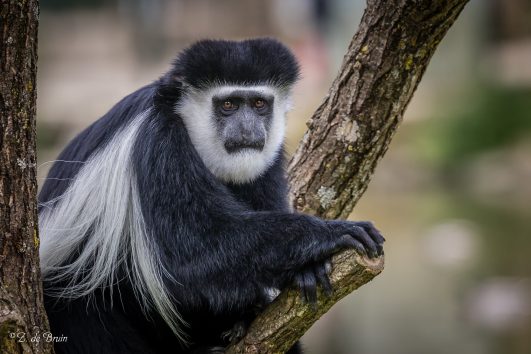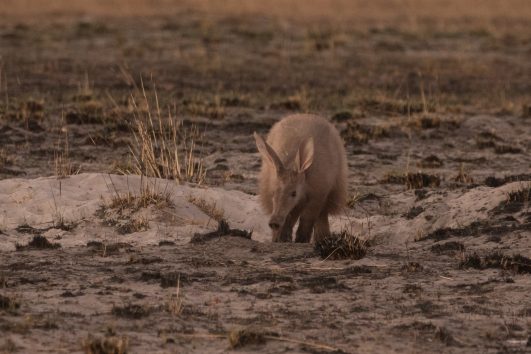Genets are small, carnivorous mammals belonging to the family Viverridae, which includes civets and mongooses. They are native to Africa, with some species also found in parts of Europe and the Middle East. Genets are often compared to cats due to their appearance and behaviour, but they are not felines.
To see these unique animals, you can find them in the rainforest zone of mountains like Kilimanjaro, Rwenzori, and Mount Meru, Mount Kilimanjaro and other national parks in Tanzania and Kenya like Serengeti, Lake Manyara, Tarangire, Arusha National Park, Ngorongoro, Masai Mara, Tsavo and Amboseli. Another fantastic place to see these nocturnal animals is at the Kikuletwa / Chemka / Maji Moto Hotsprings near Moshi, Tanzania.
Genets are slender, cat-like creatures known for their impressive tails, which can match or exceed the length of their bodies. There are around 14 recognized species of genets, each with unique traits and preferred environments. For instance, the small-spotted genet, which thrives in drier climates, sports a distinctive ridge of hair along its back from the shoulders to the tail, accompanied by rounded and elongated spots. In contrast, the forest genet does not have this dorsal crest, instead featuring a coat with more widely spaced, elongated spots. The large-spotted genet, while also possessing a dorsal crest, has one that’s less pronounced than the small-spotted genet, and it’s the species with the broadest geographical spread among the trio. All genets are equipped with retractable claws, perfect for scaling trees and seizing prey.
Physical Appearance:
- Size: Genets are slender with a body length of about 45-55 cm (18-22 inches), not including the tail, which can add another 40-50 cm (16-20 inches). They weigh between 1.5 to 3 kg (3.3 to 6.6 lbs).
- Fur: Their fur is typically a mix of gray, brown, and black, with distinctive spots or stripes, providing excellent camouflage. Some species have a black dorsal stripe running from the head to the tail.
- Tail: Their tail is long and bushy, often ringed with black bands.
- Ears: They have large, pointed ears, which are often black-tipped.
- Face: Genets have a cat-like face with sharp, pointed teeth, and their eyes are large, giving them good night vision.
Adaptations:
- Climbing: Genets are adept climbers, with semi-retractable claws that help them navigate trees and rocky terrain. Their long tail aids in balance.
- Nocturnal: Their large eyes and keen senses are adapted for a nocturnal lifestyle, allowing them to hunt under the cover of darkness.
- Diet: They are omnivores with a preference for small mammals, birds, insects, and fruits. Their sharp teeth and claws are perfect for catching prey.
- Agility: Their body structure allows for quick, agile movements, essential for hunting and escaping predators.
Habitat:
- Range: Genets are found across sub-Saharan Africa, with the common genet (Genetta genetta) also extending into Europe (Spain, Portugal, France) and the Middle East.
- Environment: They inhabit a wide range of environments from savannahs, forests, and woodlands to more arid regions. They are versatile and can adapt to various habitats, including urban areas.
- Shelter: They use hollow trees, rock crevices, or abandoned burrows for shelter during the day, emerging at night to hunt.
Behavior and Lifestyle:
- Solitary: Genets are generally solitary animals, except during mating or when females are raising their young.
- Territorial: They mark their territories with scent glands located on their feet and anal glands, which they use to leave scent trails.
- Reproduction: Females give birth to litters of 1-4 kits after a gestation period of about 10-11 weeks. The young are weaned at around 8 weeks but stay with the mother for several months.
Conservation Status: Most genet species are not currently endangered, but they face threats from habitat loss due to deforestation and agricultural expansion, as well as from hunting for their fur or for the pet trade. Their adaptability, however, allows them to persist in altered environments.
Additional information
| Habitat | Kilimanjaro National Park, Mount Meru, Mount Kenya, Rwenzori |
|---|

